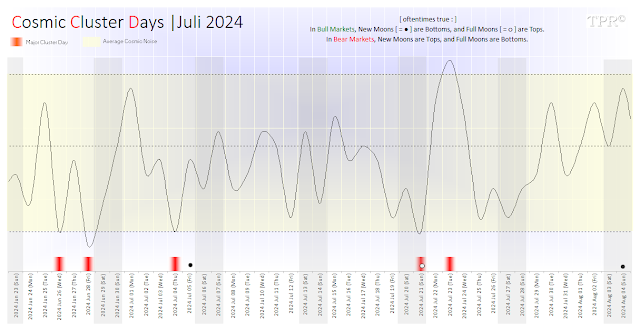In my opinion, George Douglass Taylor was one of the greatest trading thinkers, and luckily he left behind one book on trading: 'The Taylor Trading Technique' (1950). This book lays out his 'Taylor Book Method' for swing trading in futures. Taylor postulated that the markets had patterns based on "market engineering" from the "powers that be" in the grain markets. These insiders would frequently cause prices to decline to set up a buying opportunity for themselves. Then, after the market rallied sufficiently to yield profit for these insiders, a short-term top was created to give them a selling opportunity. The market would sell off, and the cycle would start again.
The effect of this engineering was to amplify the natural rhythm of the market, creating false moves that would fool traders into buying when they should be selling, and vice versa. The thrust of the Taylor Technique is to identify this rhythm and take advantage of the "false moves". I have long maintained that if an individual could identify moves in the market that would serve to inflict the most pain on unwary traders then they would have a great trading system. I believe the Taylor Technique does that. Taylor created this method for the grain futures markets, but I find it equally applicable in the financial futures markets today.
George Taylor's Three-Day Trading Cycle.
George Douglass Taylor’s system of short-term swing trading is based on the premise that the market moves in two to three day timeframes, moving from a low to a high and back to a low. The other important concepts are the importance of the previous day’s high and low, the length of upswings relative to downswings, and being a solely technical trader (ignoring fundamentals).
Cycle Day #1 – Buy Day
The first day of the cycle is the buying day. Look for a Buy Day two days after a swing high (the highest high of the past few days). On a Buy Day, look for the market to make its lows first, finding support around yesterday’s low. If the market opens flat to higher, look to buy the first sell off towards the previous low. If the market trades under yesterday’s low, be careful about going home long. The market should close higher than where it opened. If it is making new lows late in the day, it is usually best to exit. You can often get in the next day at a better price.
Generally, it’s good rule of thumb not to buy late in the day on a buy day if the market is heading lower or closing lower than where it opened. Odds favor a lower opening the next day, giving you a better enter price. Likewise, if the market is going to close lower than it opened, don’t be afraid to liquidate your position. Odds are in your favor that you’ll be able to buy at a lower price the next day.
Cycle Day #2 – Sell Day
If you are long and the market is closing in your favor, carry your long position overnight. Odds favor a higher opening the next day setting up the Sell Day, the second day of the cycle. On the Sell Day you should look to sell into strength, liquidating your position, and going home flat. Often, the sell day trades on both sides in what I call a 'fade' day. A fade day often follows a trend day and can be traded from either side.Cycle Day #3 – Sell Short Day
The third day of the cycle is the Sell Short Day. The Sell Short Day is the mirror image of the buying day. On a sell short day, you should be looking to sell early morning resistance, looking for resistance around the previous day’s high. The market should not be making highs late in the day, if it is you should be able to get a better entry point the next day. On a Sell Short Day, the market should close lower than it opened. The Sell Short Day is often followed by a 'Fade' day.
Cycle Day #3 - Sell Short Day.
That is the gist of Taylor’s technique - a rhythm of buy-sell-sell short. I don’t always recognize where we are in Taylor’s cycle (you’re always learning!), but on days when it is clear, at the least it gives you a good indication of the market’s bias for that day. In swing trading, the relation of the open to the close should indicate the direction of the next morning’s opening. This helps you determine whether the odds favor being a buyer or a seller on a given day.
Reference:



















%20-%20NASDAQ%E2%80%99s%20Midyear%20Rally%2001.jpg)
%20-%20NASDAQ%E2%80%99s%20Midyear%20Rally%2002.jpg)












